
by jlansber | May 10, 2021 | Notes from the Dean

Interim Dean Tom Donley | Photo by Kathy Hillegonds
As more people receive COVID-19 vaccines and optimism grows this spring, we are making plans for the post-pandemic future at the Driehaus College of Business. It will not be a return to business as usual. Student expectations and our assumptions about how to learn, teach and work have changed in the 14 months since DePaul moved nearly all classes and services online to protect the health of our community. Navigating this unprecedented crisis has reshaped our opportunities and challenges, and our plans for the future must address this new reality.
Over the past year, our faculty members have strengthened their training and experience in online teaching, and we have accelerated technology upgrades to support both virtual and in-person learning. While born of necessity, these actions have empowered us to offer students more options for accessing a DePaul business education. We anticipate a return to face-to-face classes this fall, in accordance with government and public health safety guidelines, but also plan to offer a robust schedule of online classes that blend virtual real-time and asynchronous learning experiences. Recent surveys of our students indicate they value flexible learning formats that allow them to balance school, work and family responsibilities.
We also are developing more degree programs with classes entirely online to serve students who would not otherwise be able to pursue a business degree at DePaul. These programs include our Master of Science in Entrepreneurship degree, which will debut online this fall.
No matter how we deliver a DePaul business education, we remain committed to high-quality, creative and engaging teaching that connects business theory and practice for our students. This issue’s feature story profiles three faculty members who are at the forefront of our efforts to innovate in the classroom.
This fall we look forward to returning in person to the Driehaus College of Business, but when we do, it will be with sadness in our hearts because of the loss of our great friend and benefactor, Richard H. Driehaus, who died this spring.
A Triple Demon, Richard lived the quintessential DePaul story. He rose from modest means to great success as a finance pioneer in Chicago, transformed by DePaul and the Catholic, urban and Vincentian values we hold dear. Richard’s generosity to our college, DePaul and many worthy causes across our city has bettered the lives of countless people. Our college is proud to bear his name and continue his legacy through our mission to educate and serve our community.

Thomas Donley
Interim Dean
Driehaus College of Business
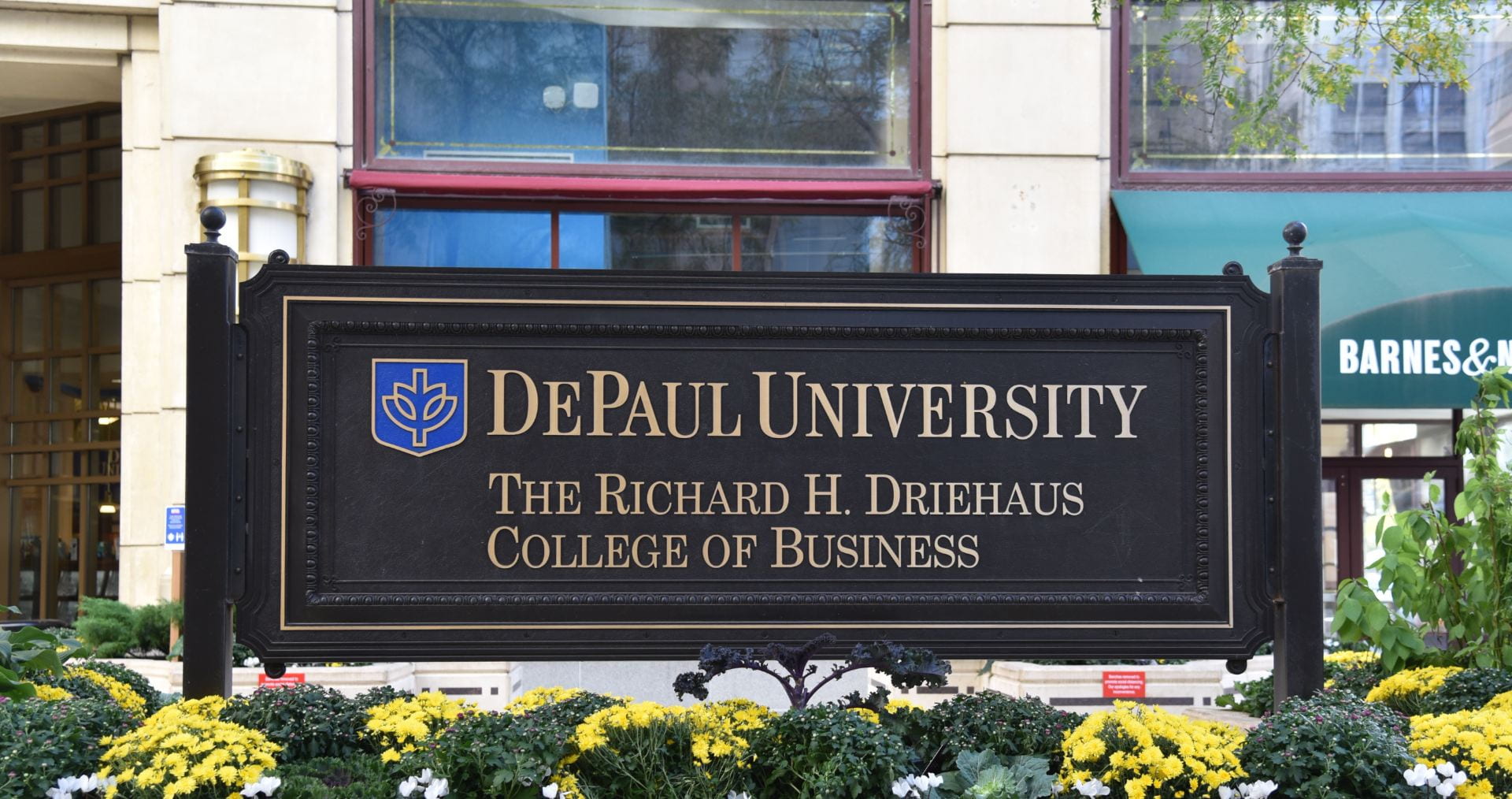
by jlansber | May 10, 2021 | College News
Business College and Accountancy School Reaccredited
 The Driehaus College of Business and its School of Accountancy & MIS have each earned five-year renewals of their accreditation from the Association to Advance Collegiate Schools of Business (AACSB) International. AACSB grants accreditation to programs that meet rigorous standards and demonstrate the highest quality in teaching, research and student achievement. It is a distinction held by only 5% of
The Driehaus College of Business and its School of Accountancy & MIS have each earned five-year renewals of their accreditation from the Association to Advance Collegiate Schools of Business (AACSB) International. AACSB grants accreditation to programs that meet rigorous standards and demonstrate the highest quality in teaching, research and student achievement. It is a distinction held by only 5% of
business schools worldwide.
Professor Named Among “Most Powerful Women in Accounting”
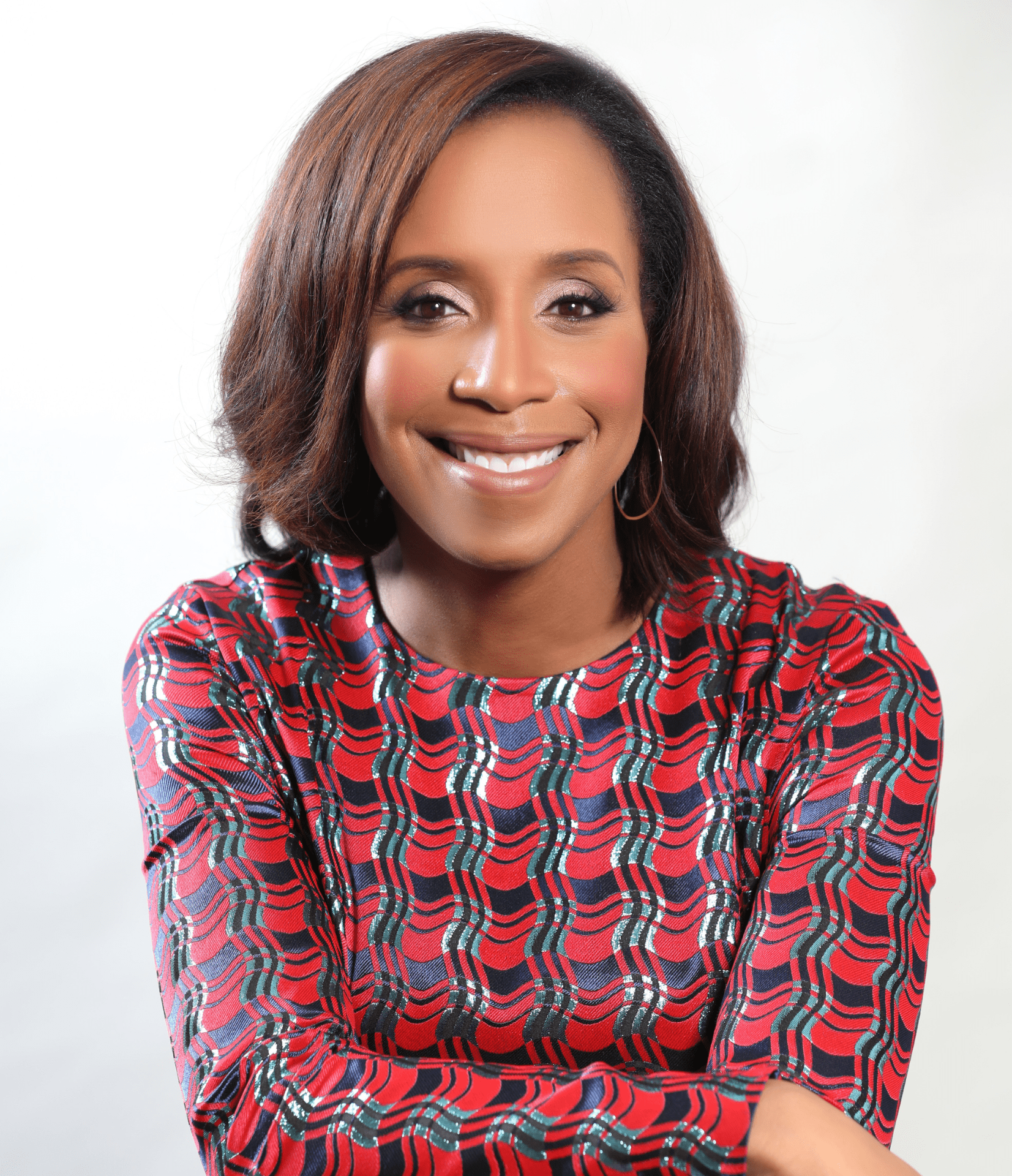 Associate Professor of Accountancy Kelly Richmond Pope made the national list of the “2020 Most Powerful Women in Accounting,” issued by the American Institute of CPAs. An innovative teacher and scholar, Pope is an expert in forensic accounting who has produced two award-winning financial crime documentaries and an e-learning game that are used as educational tools in universities and corporations nationally. Pope’s TEDxDePaulUniversity 2017 talk, “How Whistle-Blowers Shape History,” went viral and was chosen to appear on the official TED Talk website.
Associate Professor of Accountancy Kelly Richmond Pope made the national list of the “2020 Most Powerful Women in Accounting,” issued by the American Institute of CPAs. An innovative teacher and scholar, Pope is an expert in forensic accounting who has produced two award-winning financial crime documentaries and an e-learning game that are used as educational tools in universities and corporations nationally. Pope’s TEDxDePaulUniversity 2017 talk, “How Whistle-Blowers Shape History,” went viral and was chosen to appear on the official TED Talk website.
MBA Partnership Formed with College of Mount Saint Vincent

The Kellstadt Graduate School of Business has formed a partnership with the College of Mount Saint Vincent (CMSV) to offer the DePaul MBA to CMSV alumni and professionals in the New York City area. Scheduled to begin in fall 2021, the DePaul MBA@College of Mount Saint Vincent will be taught by DePaul business professors online, with plans for quarterly in-person residencies at CMSV’s Queens campus. The 16-course evening program is expected to produce its first cohort of DePaul graduates in summer 2023.
DePaul Ranked in Top 50 for Entrepreneurship Education
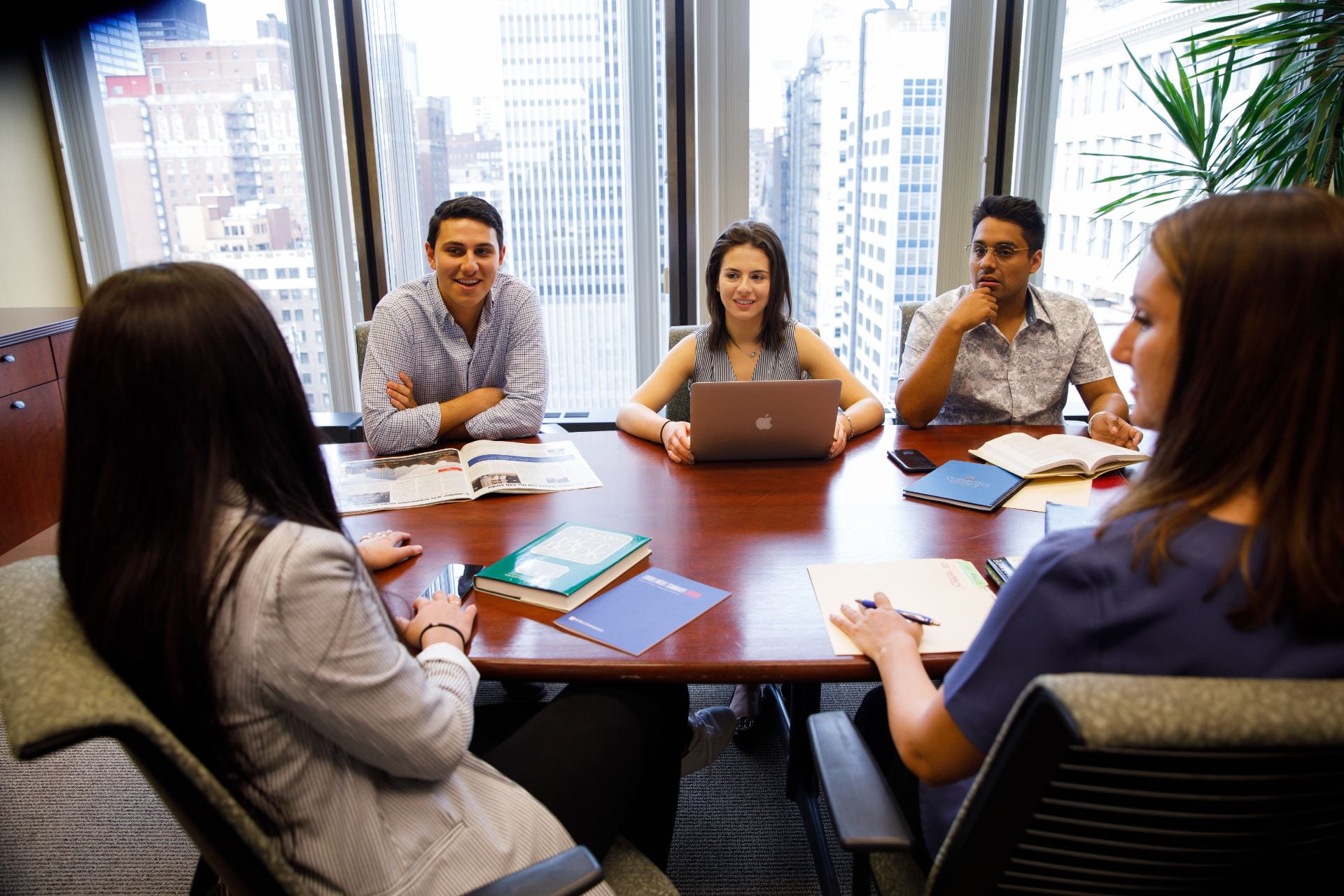 DePaul’s graduate entrepreneurship program ranked No. 19 and the university’s undergraduate entrepreneurship program placed No. 32 in The Princeton Review’s “Best Colleges for Entrepreneurs 2021,” which surveyed more than 300 institutions nationally. The success of DePaul alumni entrepreneurs was one factor that led to the recognition. Over the past decade, more than 450 DePaul alumni have founded new ventures, raising a combined $210 million, according to data gathered for the survey.
DePaul’s graduate entrepreneurship program ranked No. 19 and the university’s undergraduate entrepreneurship program placed No. 32 in The Princeton Review’s “Best Colleges for Entrepreneurs 2021,” which surveyed more than 300 institutions nationally. The success of DePaul alumni entrepreneurs was one factor that led to the recognition. Over the past decade, more than 450 DePaul alumni have founded new ventures, raising a combined $210 million, according to data gathered for the survey.
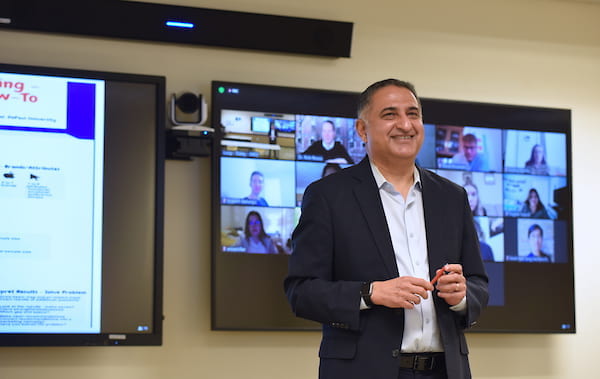
by jlansber | May 10, 2021 | Features
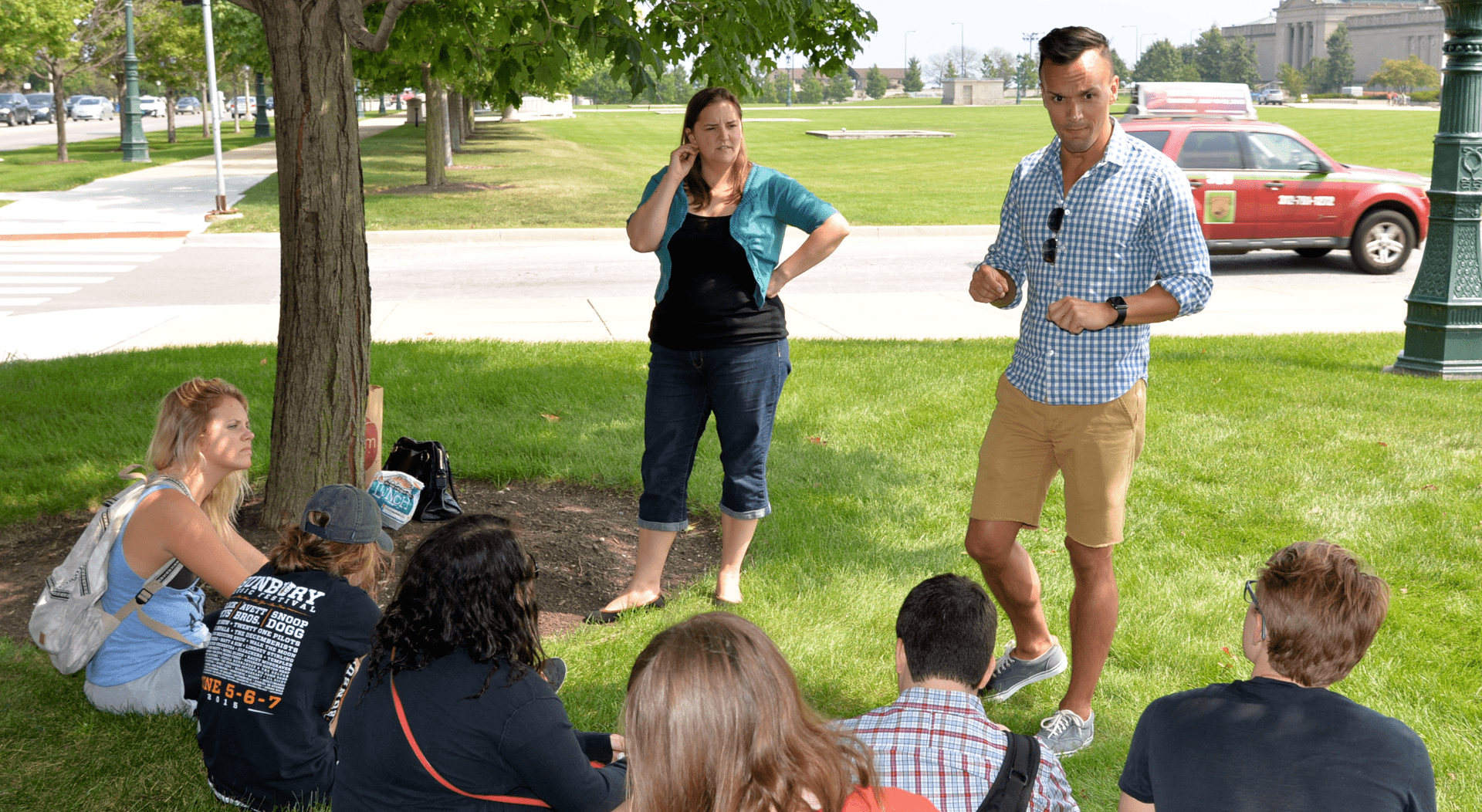
With the Museum of Science and Industry as an unconventional backdrop for his class, Associate Professor Jim Mourey introduces students to improvisation techniques designed to help them become better leaders. | Photo by Kathy Hillegonds
Driehaus College of Business faculty members are known for bringing real-world experiences to the classroom, but perhaps lesser known are some of the innovative ways they are weaving those experiences into learning opportunities for students.
Take Associate Professor of Marketing Jim Mourey, for example, who integrates improvisation techniques into his classes. What does comedy improv have to do with business? According to Mourey, more than you might think.
Mourey’s expertise is in consumer behavior, but he has been involved in improv and comedy writing since the fourth grade and is a graduate of the conservatory at Chicago’s famous comedy club, The Second City. His two passions come together in his teaching methods that combine “a little bit of comedy and entertainment,” Mourey says.
Improv training can help students become better business leaders, and Mourey’s got the data to prove it. His recent study on the effects of improv on learning found that students familiar with improv techniques tend to be more creative, are more collaborative and have a higher level of self-efficacy.
There are 10 major tenets of improv, and the most important is to approach situations with a “yes, and” mentality, he says. By implementing “yes, and,” you agree to an idea presented to you and add something new to it. “Students who take my classes go on to seek people who share the same values they’ve learned in improv,” Mourey explains. “They begin to identify the ‘yes, and’ people from the naysayers. The ‘yes, and’ people are more likely to bring solutions to the table.”
One improv activity Mourey uses is called “Five Things.” “It’s a creative brainstorming exercise where I say the name of a brand and students have to say five things they think of as quickly as possible. It’s fun and it makes people laugh, but what you’re really doing is trying to break down this fear of putting ideas out there.”
“Improv training teaches skills that are useful in business, but also in life,” Mourey says. “I’m giving my students tools they can use whenever they need them. If they’re in a situation where one method isn’t working, maybe they’ll say, ‘Hey, let me try using this other method that Jim taught me.’”
Thinking Outside the Textbook

Associate Professor Kelly Richmond Pope created an e-learning game that immerses accounting students in a financial fraud “whodunit.”
Associate Professor of Accountancy Kelly Richmond Pope goes to great lengths to engage students and get them excited about forensic accounting. Last year, with DePaul Academic Growth and Innovation Fund support, she developed an innovative e-learning platform called “Red Flag Mania,” an immersive, online “whodunit” game that challenges students to use data to uncover financial fraud at a fictional organization.
Pope explains: “Textbooks are not engaging. It’s hard to get excited about a story you read about, but what if you are in the story? That was the inspiration behind ‘Red Flag Mania.’ I thought, what if I can give students the beginning and middle of the story and have them solve the end? Learning through immersion is impactful because it gives students an opportunity to apply what they learn and have fun doing it.”
Playing to the Strengths of the Virtual Space

Associate Professor Zafar Iqbal enlisted DePaul alumni working in 10 different countries to be live guest speakers for his online class. | Photo by Kathy Hillegonds
It’s not just about converting content to an online format; it’s about reimagining the delivery of that content in ways that are not possible face-to-face. That’s when you truly start to innovate.”
When the world moved online in 2020, Associate Professor of Marketing Zafar Iqbal had never taught virtually before. But it wasn’t long before he converted the challenges of online teaching into opportunities for his students.
“I experienced a mental shift when I realized that time and space were no longer constraints,” he says. “I could bring in speakers and have students work with clients from literally anywhere around the world.”
Iqbal is director of DePaul’s Integrated Marketing Honors Program, which enrolls a cohort of no more than 30 undergraduate students in an intensive, yearlong experience that involves three major consulting projects for real businesses. By the end of the program, students emerge with 30 weeks of real-world consulting experience.
“Because working together on projects in real time is important, I quickly decided that the program must be taught synchronously [live classes that meet at a specific day and time online],” says Iqbal, who over the past year has had his students work with businesses located from California to Japan.
Utilizing the newest of the business college’s technology-enhanced classrooms, Iqbal was able to expand his online teaching techniques. First, he maximized class time. “I could use the [electronic] whiteboard and discuss course content with one group while sending another group into an online breakout room to solve a problem,” he says, “and they wouldn’t miss anything because they could watch the discussion recording later.”
Second, he reimagined the alumni career panels that he incorporates into his classes. “For the first time, I was able to host a global alumni panel. I invited alumni who work in 10 different countries,” he says. “We just had to agree on a time zone, and the world was suddenly in our classroom.”
Another technique Iqbal uses involves structuring course content into a controlled sequence to build upon a narrative. He strives to create an integrated experience versus having his videos available all at once, like a playlist that could potentially be watched out of order.
“There are strengths to each teaching modality, so in order to be successful you need to learn and leverage those strengths,” Iqbal shares. “It’s not just about converting content to an online format; it’s about reimagining the delivery of that content in ways that are not possible face-to-face. That’s when you truly start to innovate.”
By Nadia Alfadel Coloma
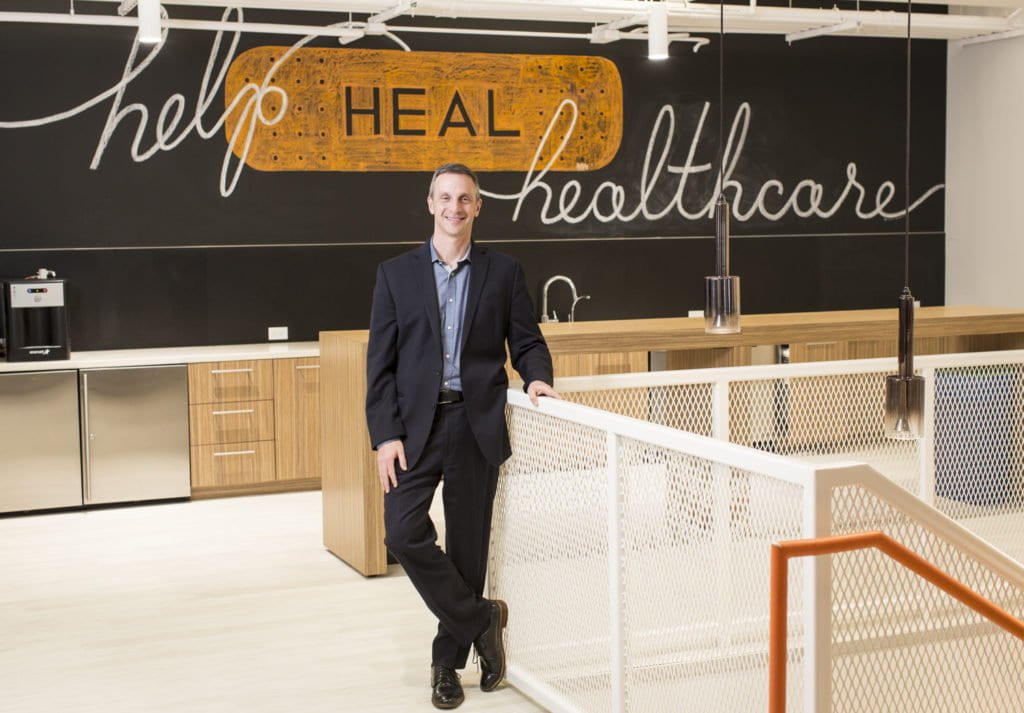
by jlansber | May 10, 2021 | Alumni Profiles

Dan Michelson, CEO of Strata Decision Technology, says he discovered his voice as a leader while studying for his DePaul MBA.
“I never even considered running a company until I interviewed for this job,” says Dan Michelson (MBA ’94), who celebrates his ninth year as CEO of Chicago-based Strata Decision Technology this June. Growing up in the Chicago area, Michelson “was an introverted kid, very insecure,” he explains, “and when I got to DePaul, I was still very much that person.”
Michelson credits Marketing Associate Professor Joel Whalen and his class “Effective Business Communication” for helping him discover his voice and confidence as a leader. “It completely changed how I thought about communication and connecting with people.”
Those skills have served Michelson well in his career. For more than a decade, he was chief marketing officer at Allscripts and helped the health care IT company grow revenue from $50 million to more than $1 billion. When Strata offered Michelson the CEO position, he set his sights on transforming it into one of the top health care data analytics software companies in the world. Named among the city’s top workplaces by the Chicago Tribune in 2020, Strata has more than 2,000 hospitals as customers and has grown from 50 to 500 employees during Michelson’s tenure.
“The biggest problem in health care is the cost of it,” Michelson says. “Right now, Strata is one of the central players in our country in terms of helping hospitals and health care delivery systems bend the cost curve. We have a cloud-based solution that’s used for financial planning, analytics and driving performance. We take something that’s very opaque—the cost of care—and we make it available to people who can do something about it.”
When COVID-19 hit last spring, Strata launched a new data report, the National Patient and Procedure Volume Tracker, to help hospitals allocate resources more effectively. The tracker has become the health care industry’s go-to tool for analyzing patient volume trends.
Michelson strongly believes business leaders should give back to the community and says his experience managing Chicago-area charity initiatives helped prepare him to run Strata. With his wife, Kim, he co-founded projectMUSIC, a benefit concert that sends underprivileged children to overnight camp. He also co-chairs Hack Hunger, a Chicago tech company collaborative that seeks to alleviate hunger.
“Tech companies often talk about saving the world, but they’re not really good about translating that inspiration into action,” he says. “For the past five years we have hosted a hackathon where we invite technologists from across the city, including high school students, to work on a set of problems with the Greater Chicago Food Depository.”
While seeking to address business or societal challenges, Michelson says he is driven by one question: “Are you doing meaningful work?”
“I give everyone the same advice, which is to find something you care about and work with people you care about,” he says. “If you do that, you’ll be happy and have an amazing career.”
By Robin Florzak

by jlansber | May 10, 2021 | Features

The pandemic has accelerated the trend of remote and hybrid work and has created a values shift among employees in terms of what they want and need from an employer.
The COVID-19 pandemic fundamentally shifted traditional views of how and where we work, forging a new path toward increased remote and hybrid working environments. New challenges and opportunities are presenting themselves as organizations and their people adjust to changing workplace norms, with some teams staying fully or partially remote and others re-imagining what it means to work on-site at an office. Regardless of industry, DePaul alumni and faculty experts agree that one size does not fit all when it comes to determining the best way forward.
Remote work—a trend accelerated
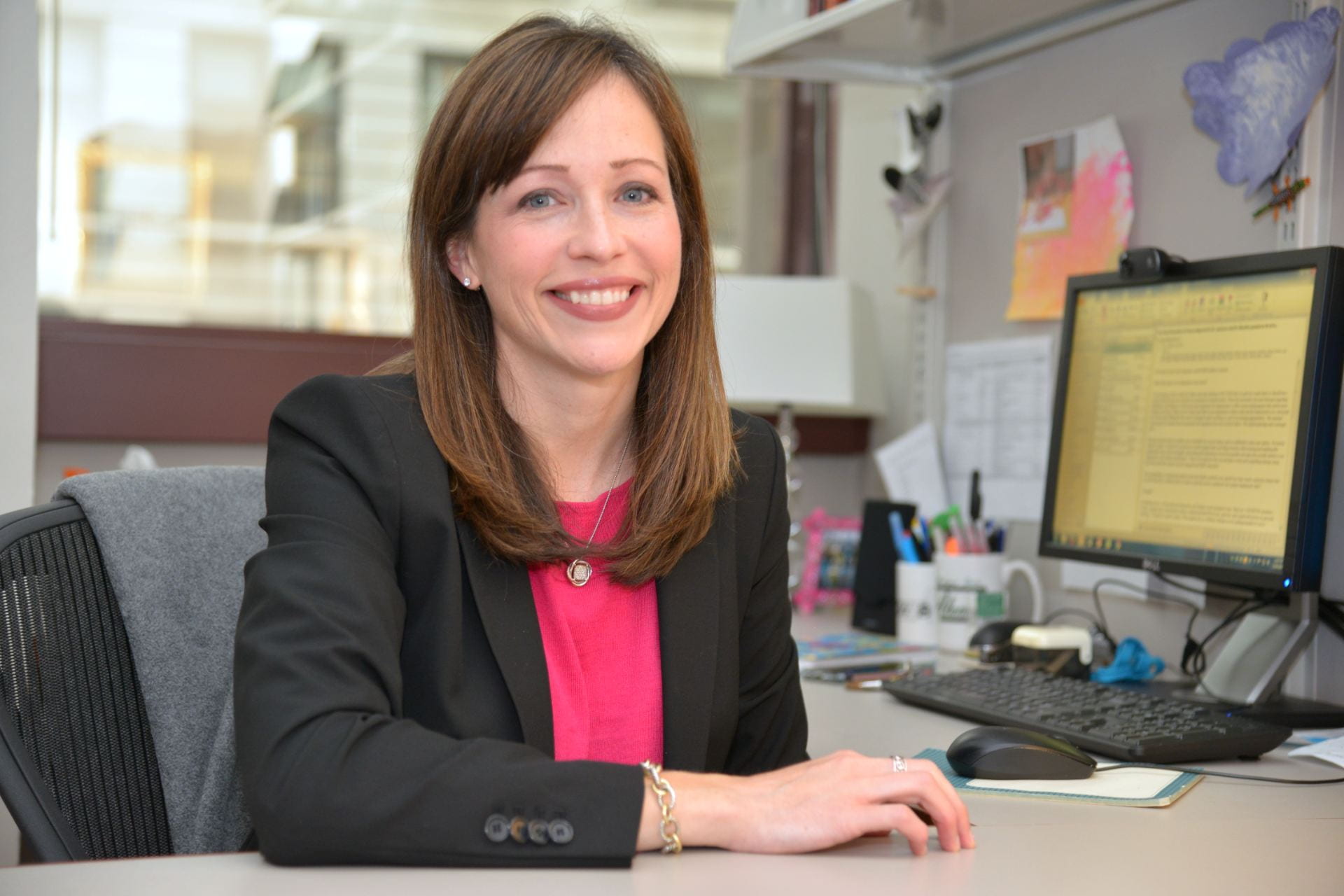
Jaclyn Jensen, associate dean for student success at the Driehaus College of Business, says employees are looking for more flexibility and autonomy from their workplaces. | Photo by Kathy Hillegonds
“A significant percentage of people worldwide worked remotely pre-pandemic, so the idea of having a portion of your workforce remote is not a new concept,” explains Jaclyn Jensen, associate dean for student success, who teaches in DePaul’s human resource programs, including a new Executive Master of Science in Human Resource Management. “What has happened is that a much broader swath of employees has experienced the opportunity, so for them and for their managers, it is new.”
The pandemic has accelerated the trend of remote work and has created a values shift among employees in terms of what they want and need from an employer.
“We’ve been seeing significant turnover in the job market as people are seeking more flexibility and autonomy,” Jensen says. “Employees want to feel valued by their employer as a whole person and not feel like a faceless, nameless contributor lumped into a group. Organizations have to think about how to stay competitive in order to retain and attract talent.”
A new dynamic in the manager-employee relationship has also emerged as the pandemic forced organizations to let go of certain aspects of control over their workforce. Trust, autonomy and accountability have come to the forefront. “If communication was important before, it is even more pivotal now,” says Jensen, who advises managers and employees who are staying fully or partially remote to find innovative ways to create regular touchpoints, set boundaries and expectations, and establish a clear sense of goals and accountability.
“There are strategies to help teams build connections and a sense of trust, comradery and collaboration that can still be implemented in a remote or hybrid work situation,” Jensen says. “It just requires organizations to take a step back, think about lessons learned from working remotely through a pandemic and consider feedback from key stakeholders. They should also consider the nature of the work that needs to get done and allow teams to make the right choices for themselves.”
Employee engagement in the virtual/hybrid workplace
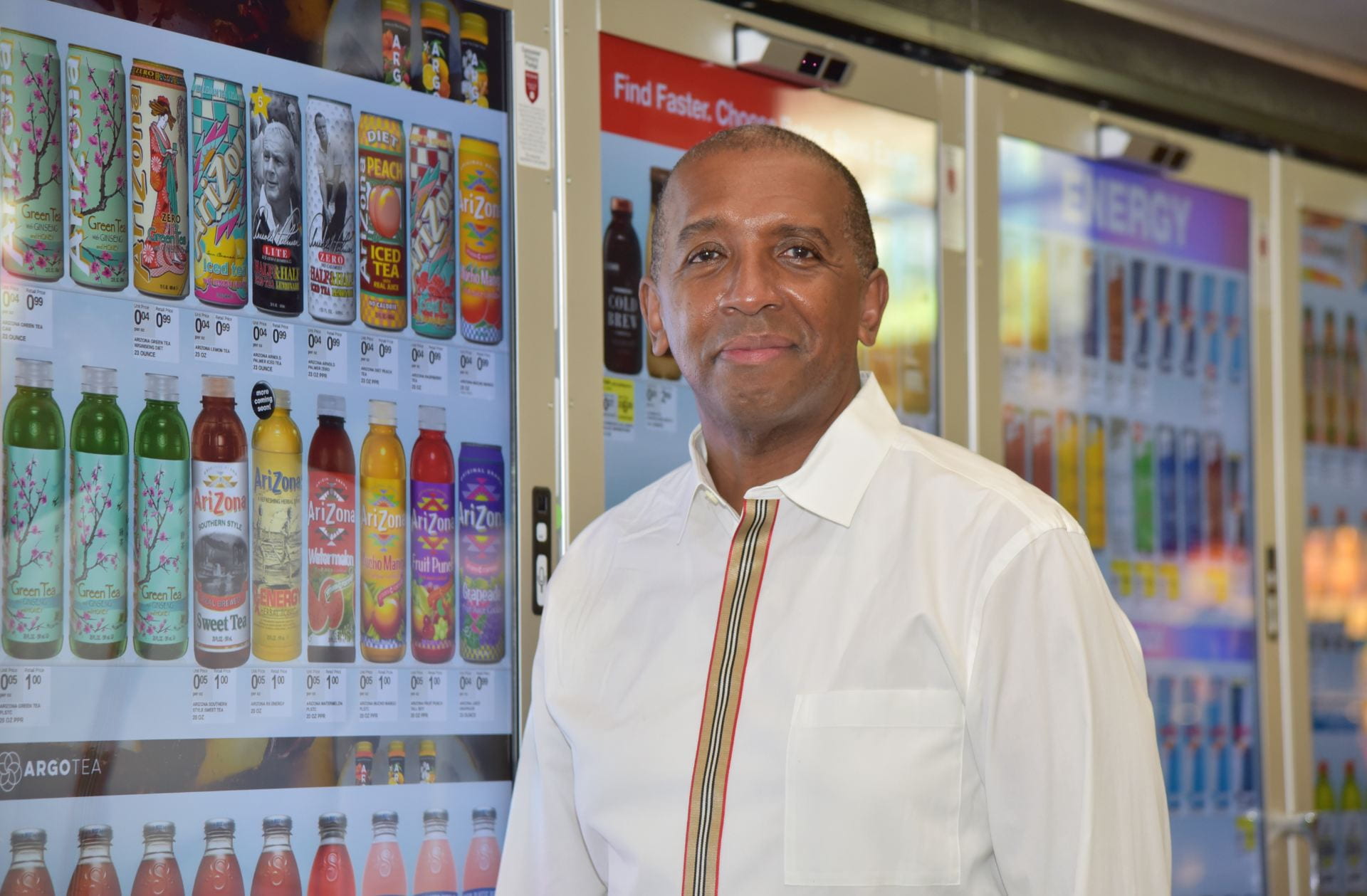
Mark Wattley (LAS ’88), chief people officer for Cooler Screens, recommends that organizations with virtual work environments create opportunities for employees to have nonbusiness conversations. | Photo by Kathy Hillegonds
Expectations around getting work done have become far more important than where people are physically located. Employees are more open to the possibilities when considering an employer, and organizations are moving away from an era where recruiting and hiring were based solely on geographical location.
Early-phase tech company Cooler Screens doubled its workforce in 2021, hiring mostly remote employees after realizing the company could access a larger talent pool while working virtually throughout the pandemic. Headquartered in Chicago, the company has created new ways to onboard and engage its employees, almost half of whom are now located out of state (in 2019, only six out of the then small team of about 25 worked remotely). Team engagement and collaboration become more complex when a workforce is dispersed.
“We had an open concept floor plan with no private offices where everyone, including the CEO and senior leadership, was on the same floor,” shares Chief People Officer Mark Wattley (LAS ’88). “It had a real buzz about it, and that’s hard to replicate remotely. We’ve had to think differently about how we are getting the work done, but also, just as importantly, about how we are communicating and connecting.”
According to Wattley, creating time and space to have nonbusiness conversations is crucial for team rapport, bonding and engagement, especially in a remote or partially remote work environment. “We spend the first few minutes of our weekly team meetings chatting about photographs that we ask people to send that represent what they did over the weekend,” he shares, as an example. “It encourages those nonwork conversations and sidebars that can be a missed opportunity when you don’t see your co-workers on a daily basis.”
Cooler Screens officially reopened its Chicago office in the fall. However, with an increased emphasis on flexibility, the focus has been on using the office for collaboration, some meetings and socializing and as an option for individual work. And with a large workforce now outside of Chicago, the company plans to implement a framework for in-person meetings and events throughout the year to bring everyone in the company together to collaborate and connect.
“We have an extraordinary opportunity in HR to reshape how we work and how people think about work,” Wattley says. “The in-person component is still important, but in this new age, we need to think strategically about what it means to be in an office or not in an office. In my 30-year career, I can’t recall another opportunity like this for management and employees to have these conversations, and I think we should not waste it.”
Rediscovering the value of the office workspace
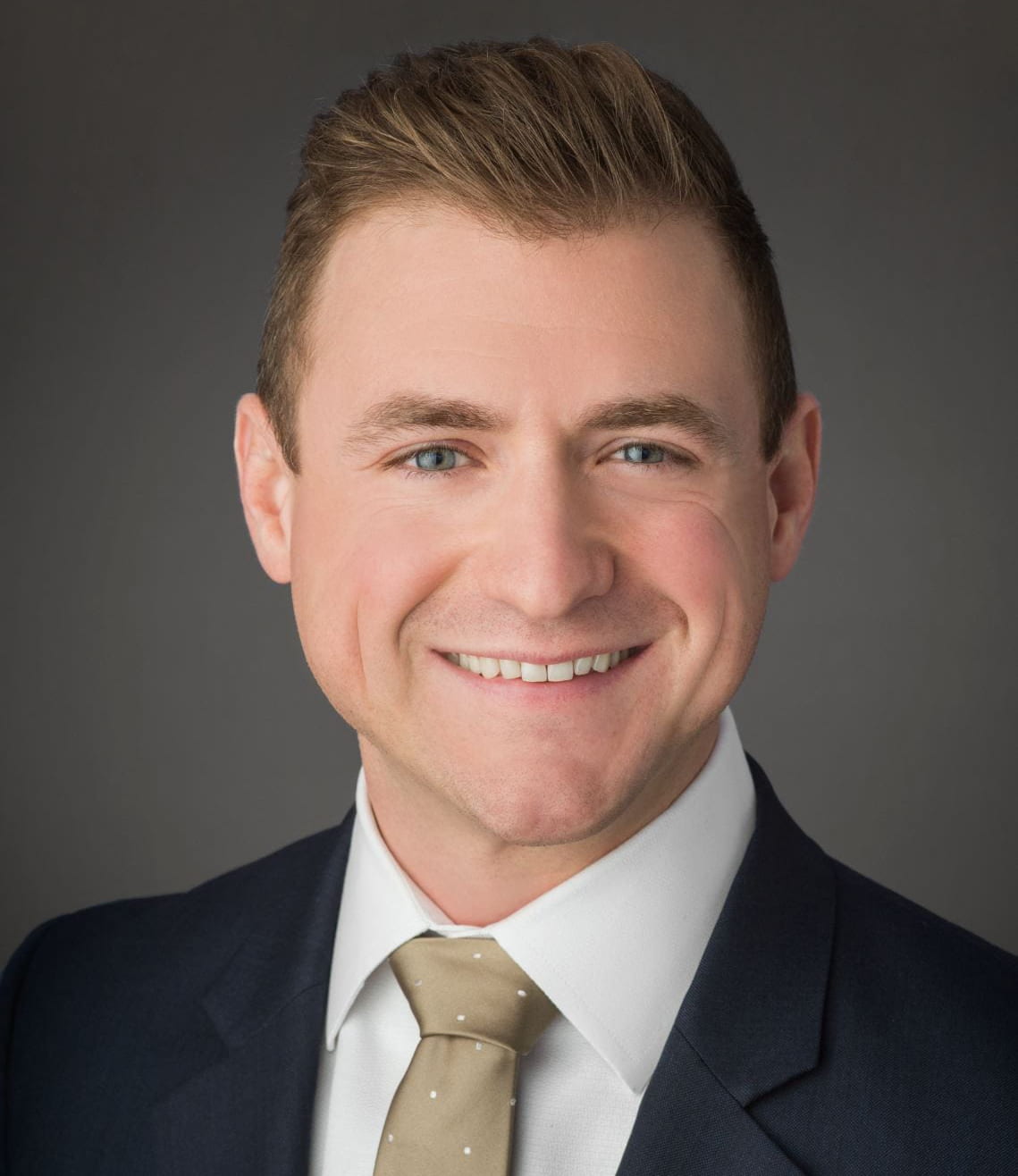
CBRE Tenant Representative Justin Hucek
Reimagining office workspaces to increase employee engagement and productivity among workers is another rising trend. Justin Hucek (BUS ’09, MBA ’18) is an office tenant representative at CBRE who helps companies find workspaces in downtown Chicago and around the country. The office real estate market took a hit during the pandemic, but Hucek says it’s starting to pick up again, albeit with different needs.
“One of the major things we’re seeing is companies trying to create an environment that feels safe and welcoming, but also, frankly, a really cool space to come back to,” he says. “There’s been a mindset shift in trying to use office spaces as a way to attract people back.”
The successful companies, Hucek says, are the ones rethinking and revamping their offices to create more modern, collaborative working spaces of the future. “How can we utilize this space to create engagement, collaboration and inspiration in a way that can’t be done when you’re at home working alone?” is a question many are seeking to address. There has also been an increase in satellite offices popping up around the country as more companies are hiring remotely and wanting to provide a space for those employees. So, while office spaces aren’t going anywhere, the way they’ll be leveraged will likely look different.
One of the major things we’re seeing is companies trying to create an environment that feels safe and welcoming.”
– Justin Hucek (BUS ’09, MBA ’18)
“One thing that will drive how companies decide on their hybrid models is what their industry peers are doing,” Hucek says. “Keeping an eye on that will be important for attracting and retaining talent. If you’re a large firm asking your employees to come back five days a week, and your competitor offers flex days twice per week, you may run into a problem.”
The future of work—tips for success
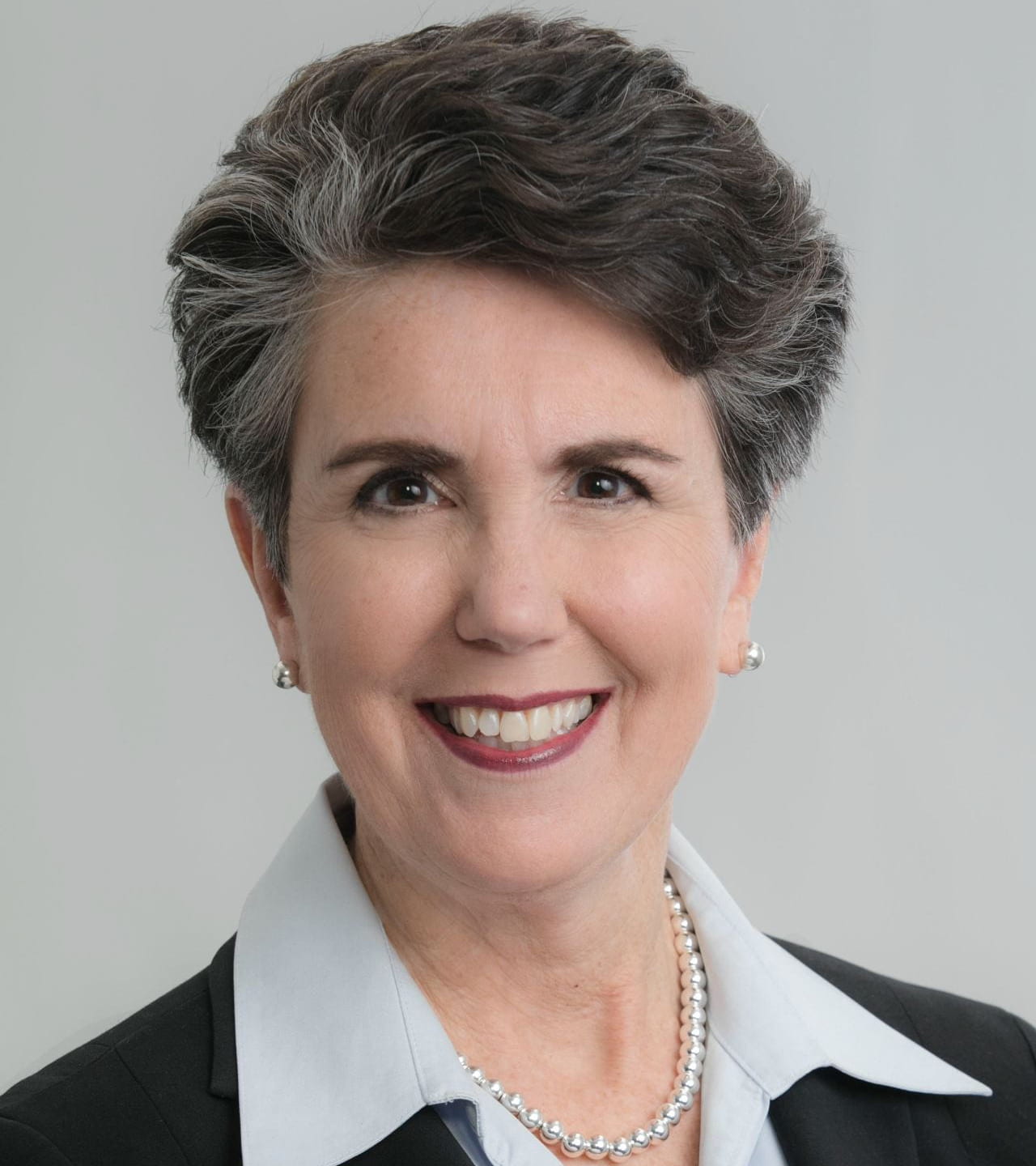
Leslie Lemenager (MBA ’89) consults with companies on strengthening employer-employee relations.
“Pre-pandemic, most leaders would have said ‘people are our most important asset,’ but I feel there was a bit of lip service paid to that,” says Leslie Lemenager (MBA ’89), president of Gallagher’s International Benefits & HR Consulting division. “But now I think employers truly believe that people really are important. Whether you’re an educational institution or manufacturer, you need people in order to achieve your goals.”
Lemenager works with companies to help strengthen employer-employee relationships. She has these tips for organizations to navigate the new workplace:
- Know your core mission and values. When you understand who you are and what you do, it becomes easier to achieve your goals in an evolving hybrid/remote workplace. Organizations with this strong foundation adapt more quickly and are better able to make decisions that blend an employee’s needs with the business goals and objectives.
- Be consistent with your messaging. Communicating your plan to employees will be a challenge. Overcoming the challenge starts with leaders believing in and sharing a unified plan. The more effectively you can communicate and model your vision, the easier it will be to get others on board. Strong messaging also will help managers gain trust and autonomy for making decisions on a local basis.
- Identify the external factors and barriers beyond your control. Make sure you understand your decision-making framework. Know your technology constraints, your budget limitations and your industry’s HR policies and practices that may make change difficult or unattainable.
- Support the manager-employee relationship. Equip managers and employees with the tools, training and professional development they need to be successful in their new working environments. Many managers will need assistance with managing performance and supervising remote team members.
Employees, Lemenager says, need to be more proactive in engaging with their managers and peers, as well as take more ownership of their professional development. “How you get noticed by the higher-ups, get added to the groups or projects you want and build your network is going to look different,” she says. “It can be easy to just focus on your work and not pay attention to opportunities that can aid your career progression if you’re not surrounded by work every day in the traditional sense.”
By Nadia Alfadel Coloma














